

Atsumi is a town at the lower-most point of the Shonai region. It's a cute little sea-side village that Peter visits once a month to teach at the local High School. One day in October, Peter and Kim took a short trip to Atsumi just to look around (and to have an experience on the pleasant Japanese rail system).
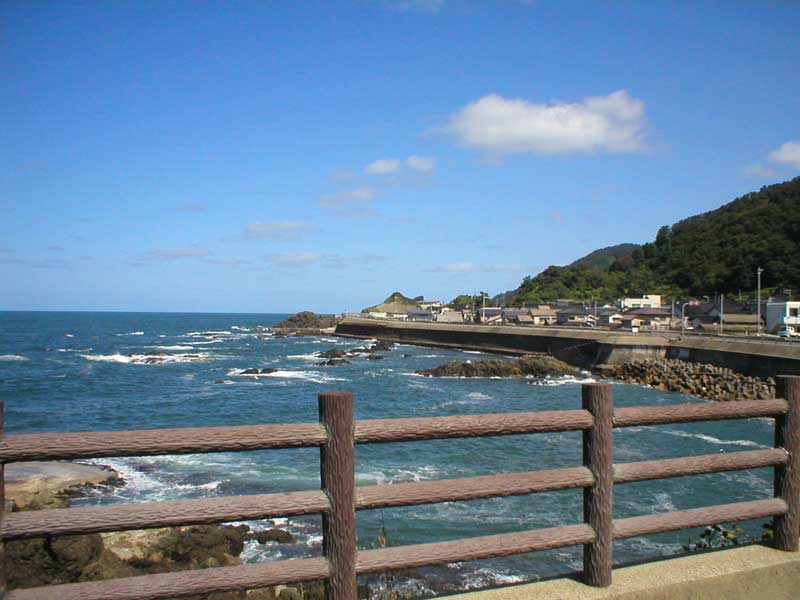
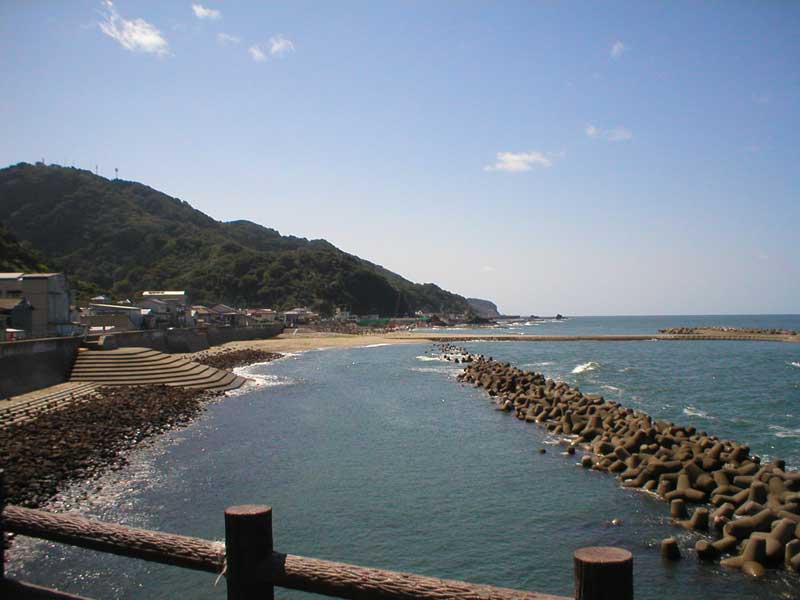
These are two nice pictures of the part of Atsumi that is on the sea coast. The town is separated from the coast by a highway that runs along the Sea of Japan. Unfortunately, there isn't much nice beach in this area--mostly concrete. My neighbor in the teachers' room at Chuou High School is a sailing instructor, and this is where he holds most of his sailing lessons. As you can see, it was a gorgeous day when we visited Atsumi, unlike our trip to Kamo.
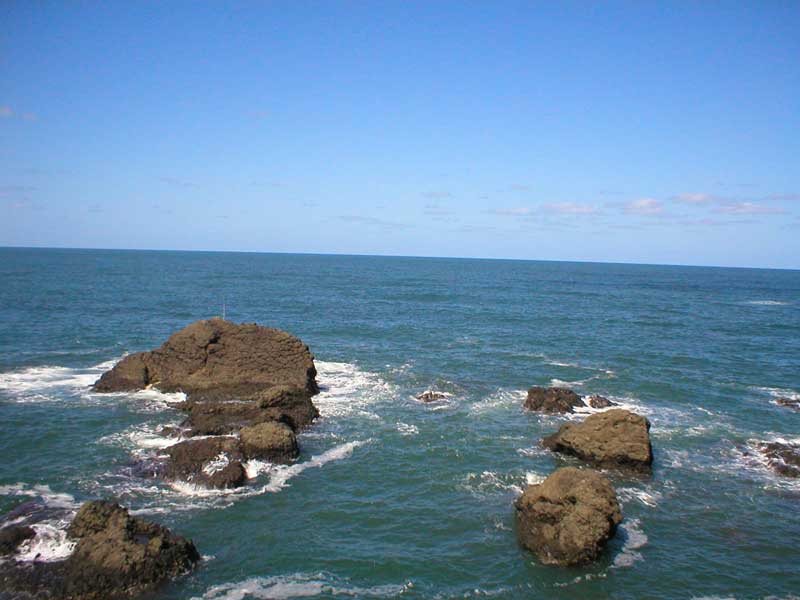
This is the Sea of Japan just off Atsumi all by itself. There are a lot of jagged rocks along the Japanese coast where they sometimes build small shrines. The coastline actually looks a lot like the Pacific Northwest.
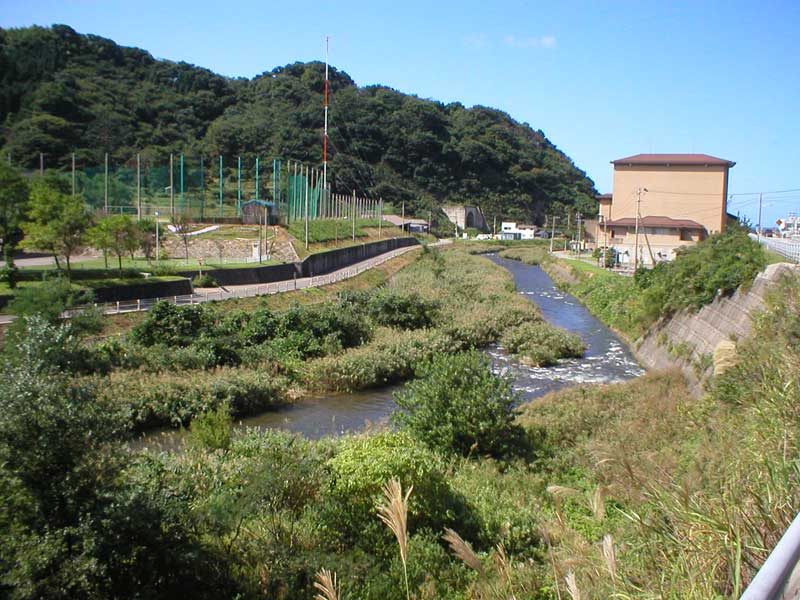
Moving further into Atsumi, there is a small river that runs the length of the town from the mountains down to the sea. It's actually relatively concrete-free by Japanese standards. There are foothills all around the town, and it's really very beautiful.
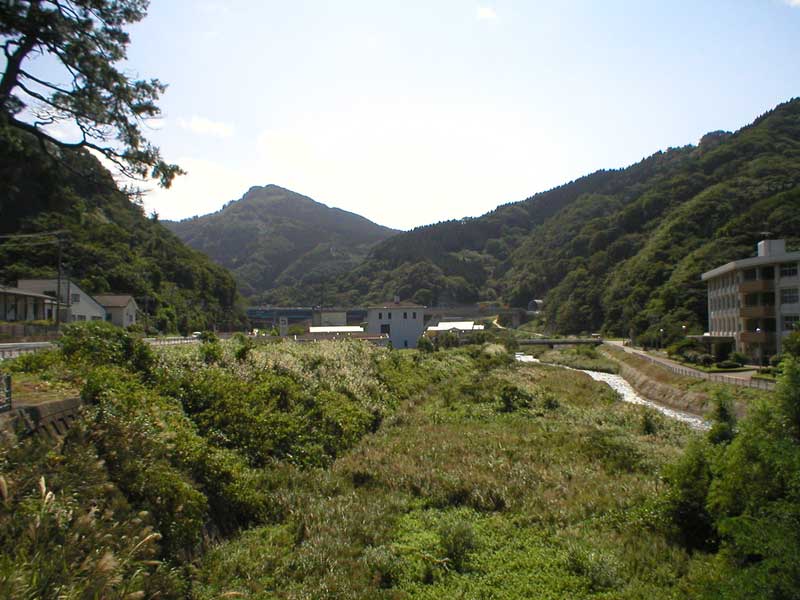
From this view, you can see back towards the mountainous part of the town. Further down the road from this scene is a cluster of rather large onsens (hot springs) and hotels. It's a very popular destination for city-weary people seeking a picturesque get-away. We met one Japanese gentleman from Tokyo who had a house in Washington State where his wife lived, and toured Latin America extensively selling pharmaceuticals for a large Japanese pharmaceutical company. Japanese people who speak decent English are always anxious to talk to us.
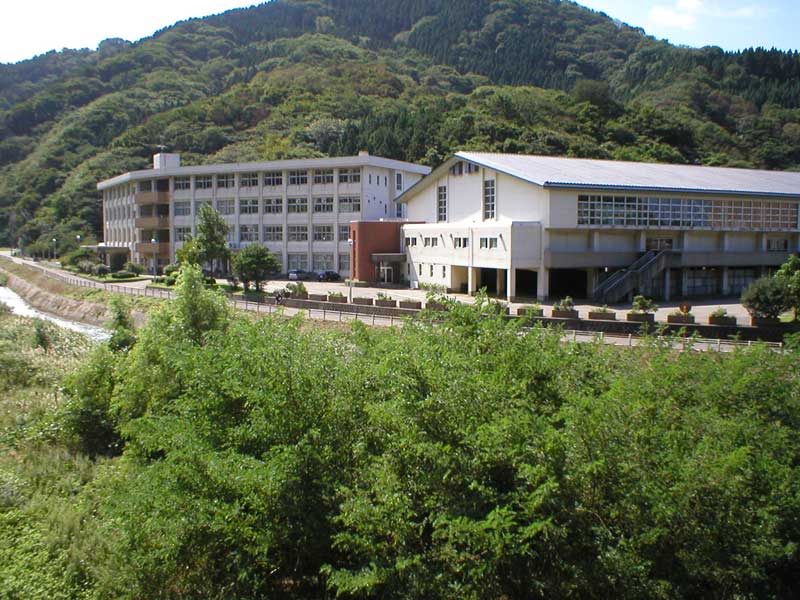
This is Atsumi-kou, Peter's only visting school. It looks rather large, but the student body is only 89 students. Poor Atsumi-kou has a bad reputation--deservedly as the students really don't care much about school or pay attention in class. The teachers, and even the students, are very endearing, however, and Peter really enjoys his visits. Unfortunately, this school will probably not exist anymore within another five to ten years.
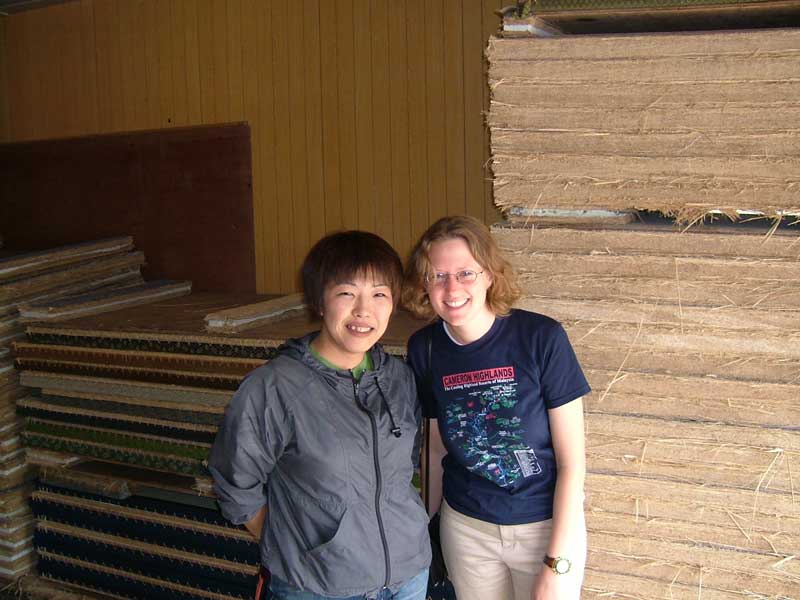
Here is Kim and Ai, our Japanese teacher who lives in Atsumi. Ai's family runs a tatami (traditional woven flooring used in houses) shop.
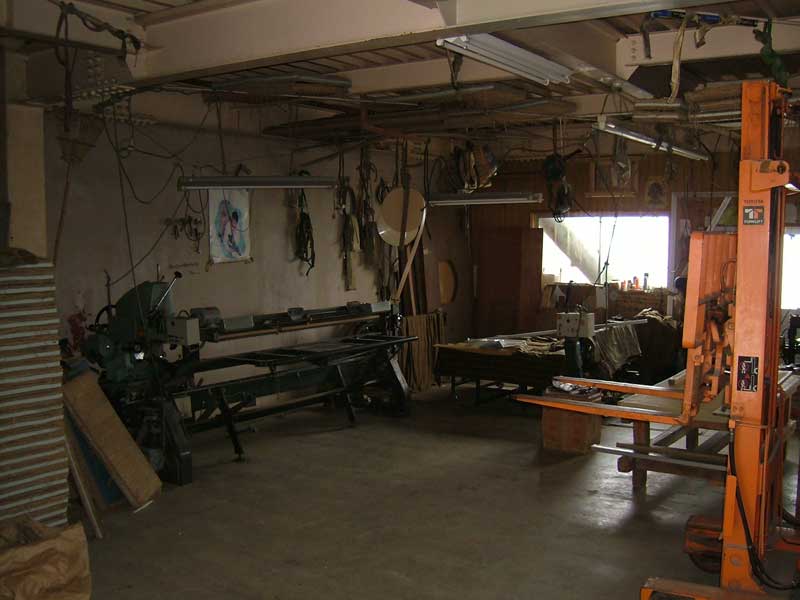
Here are some of the machines and tools used in making tatami. The mats end up being fairly heavy so they even have a forklift to help out.
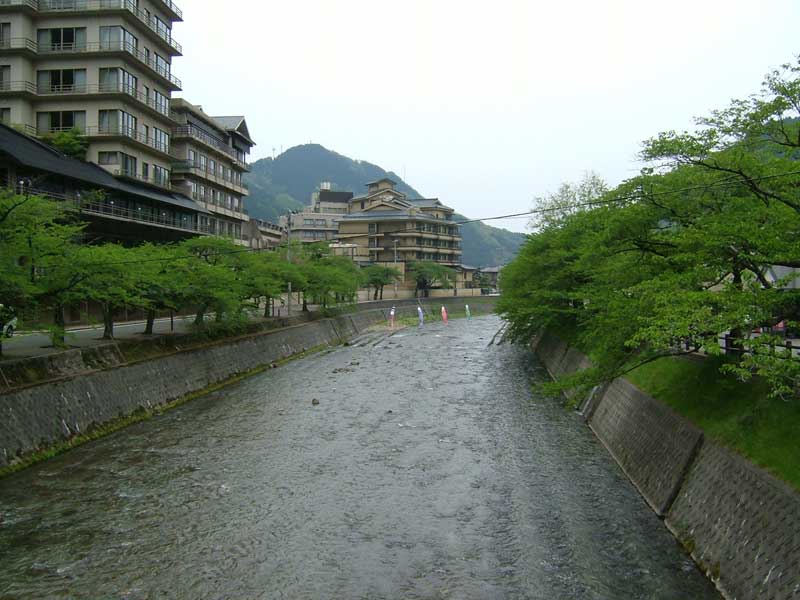
Inland Atsumi has a river running through it. The tall buildings you see are hotels that have onsens (natural hot spring baths).
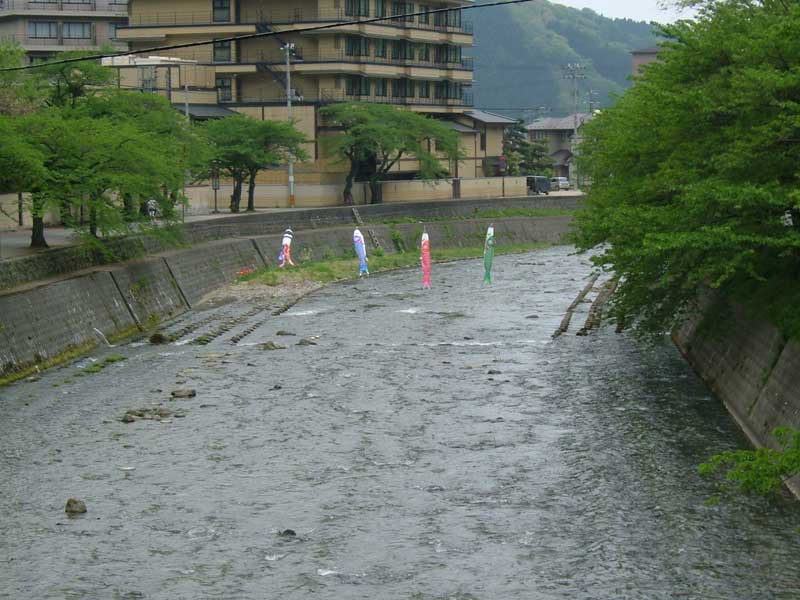
These windsocks are in the shape of koi, or carp. In May, there is a boy's day. The symbol for strength and boyness is a carp and parents hang these up in hopes that their boys will grow up to be as strong as carp.
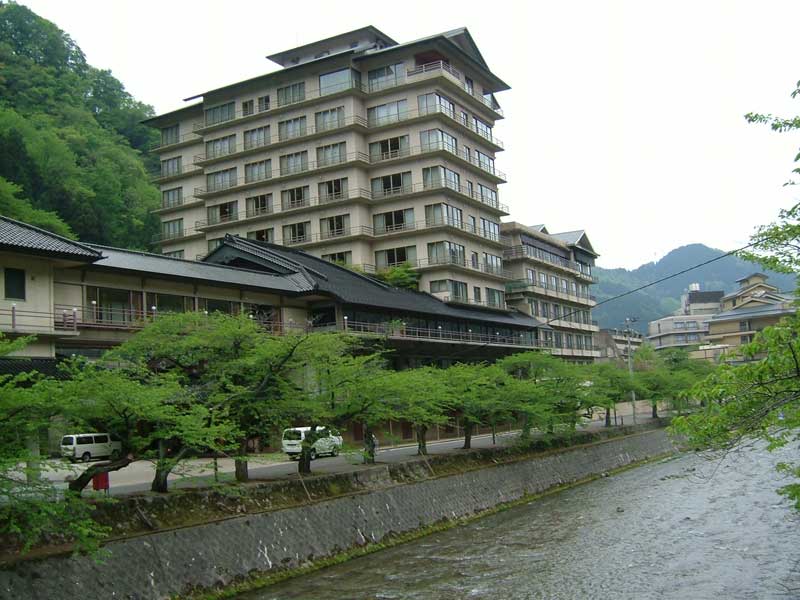
Here's another view of one of the hotels. Peter stayed at one of these places for his school's bon-enakai, or end of the year party.
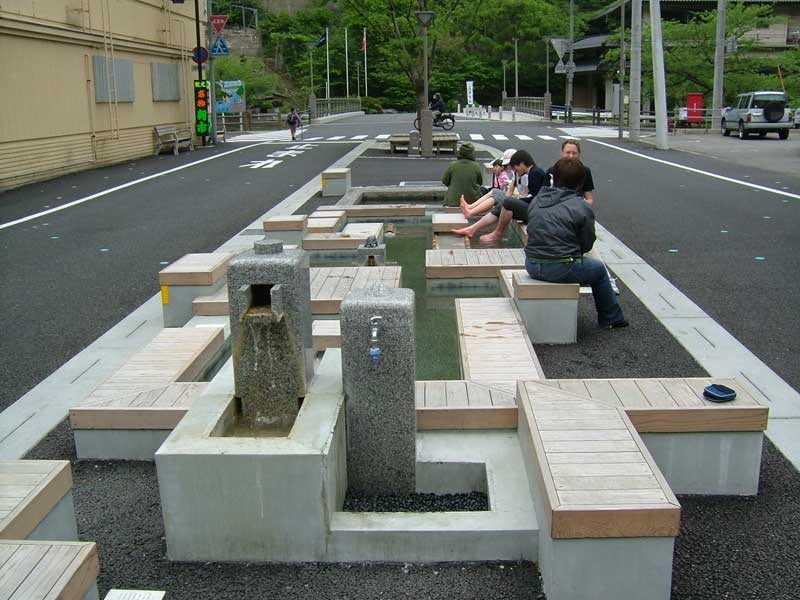
Atsumi has so much natural hot spring water they built a foot bath in the middle of the street. It's free. And hot! You simply take off your shoes and socks and put in your feet until they are a bit steamed and red. Unfortunately, we could only handle the lukewarm water (for babies and toddlers!) at first. Gradually, we moved on to the lowest level of hot water.
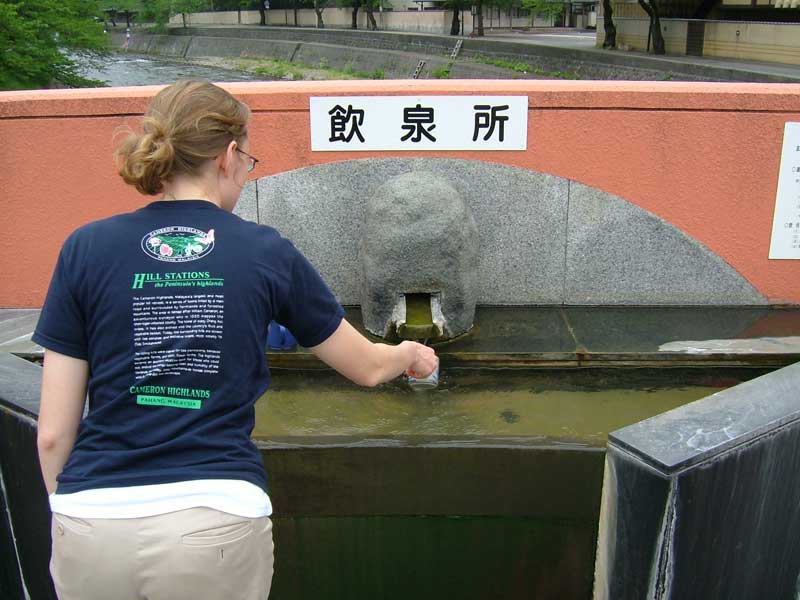
Atsumi also has a natural hot spring water dispenser with cups. It seems strange to drink the water but we were assured that it is very healthy (though everything seems to be healthy for us here!). It tasted a bit sulfur-y. Again, this is simply a stone monument in the middle of a sidewalk in Atsumi. What a great town!
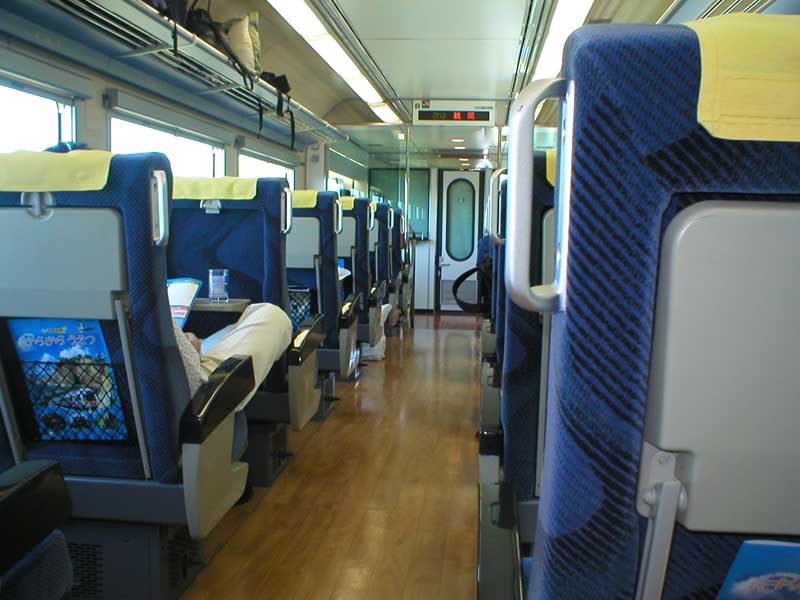
On the way back we took the express train... and we were lucky enough to get treated to the brand-new "kira-kira uetsu" train. The floor is even mock hardwood! On the sign in the background you can barely make out the kanji for Tsuruoka, because we're headed back to good old "Crane Hill City" (that's what Tsuruoka-shi means).
That was our small mini-trip to Atsumi. It was a nice way to spend a Saturday.